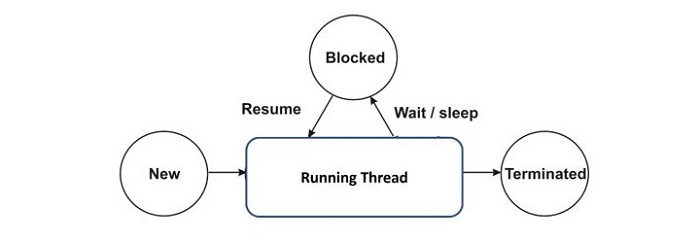Python thread lifecycle
Python Thread Lifecycle
A thread object goes through different stages. When a new thread object is created, it must be started. This calls the run() method of the thread class. This method contains the logic for the process to be executed by the new thread. When the run() method ends, the thread completes its task and merges with the main thread.
While a thread is running, it can be paused for a predetermined period of time or asked to pause until an event occurs. The thread resumes after the specified interval or when the process completes.
Python’s standard library has two modules, “_thread” and “threading,” that contain functionality for working with threads. The “_thread” module is a low-level API. In Python 3, the threading module was added, providing more comprehensive functionality for thread management.
Python’s _thread Module
The
_thread module (formerly the thread module) has been part of the Python standard library since version 2. It is a low-level thread management API and serves as a support for many other modules with advanced concurrent execution capabilities, such as threads and multiprocessing.
Python – threading Module
The newer threading module provides more powerful, advanced support for thread management.
The Thread class represents an activity that runs in a separate thread of control. There are two ways to specify an activity: by passing a callable object to the constructor, or by overriding the run() method in a subclass.
threading.Thread(target, name, args, kwargs, daemon)
Parameters
-
target − The function to call when the new thread starts. The default value is None, meaning no function is called.
-
name − The name of the thread. By default, a unique name, such as “Thread-N”, is constructed.
-
daemon − If set to True, the new thread runs in the background.
-
args and kwargs − Optional arguments passed to the target function.
